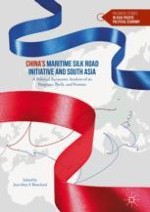This book brings together a diverse range of responses to China's Marine Silk Road Initiative, which proposes to redraw the map of Asia, particularly South Asia. China’s 21st Century Maritime Silk Road Initiative (MSRI) is a massive scheme to connect wide swaths of East, Southeast, South, and West Asia through a dense web of interconnected hard and soft infrastructure involving ports, roads, logistics facilities, special industrial zones, and free trade and investment agreements. This book will be invaluable for students of Chinese foreign security and foreign economic policy, those interested in South Asia including Indian foreign security and economic policy as well as Indian relations with China, those attentive to international economic developments in East and South Asia, and those interested in the political and economic situation in specific MSRI participant countries such as Pakistan, Maldives, and Sri Lanka as well as their political and economic relations with China.
